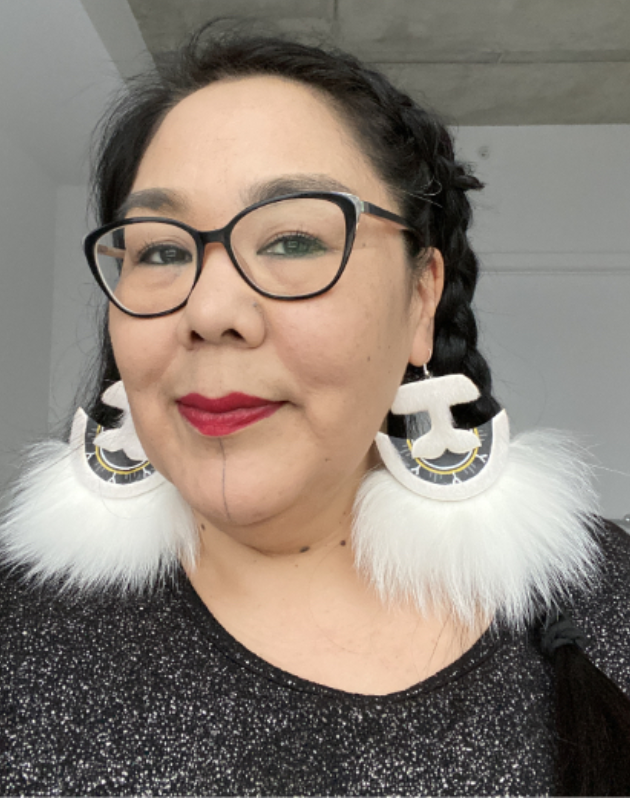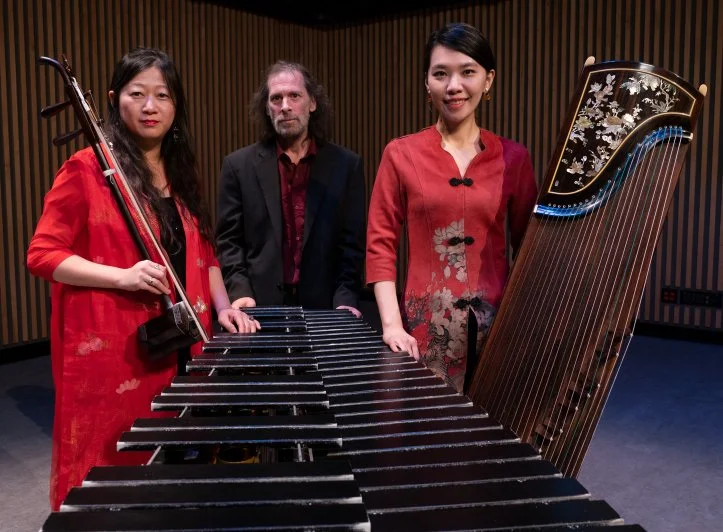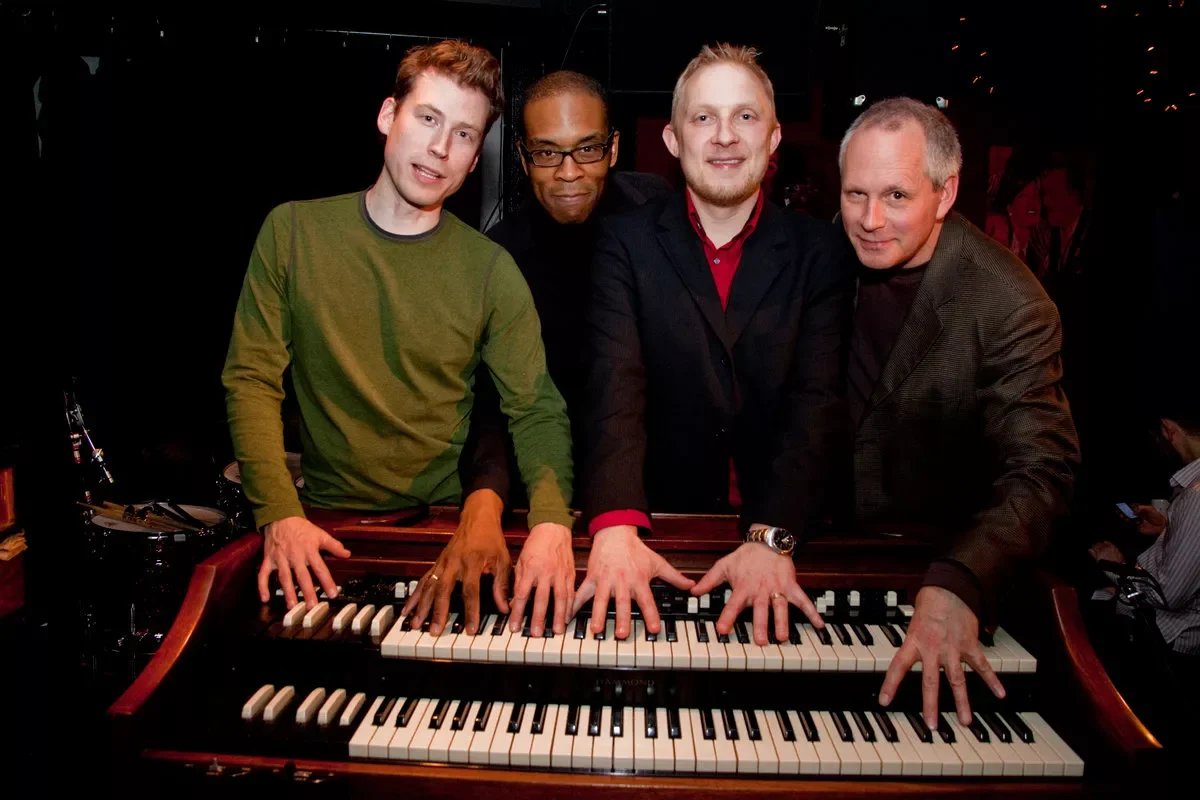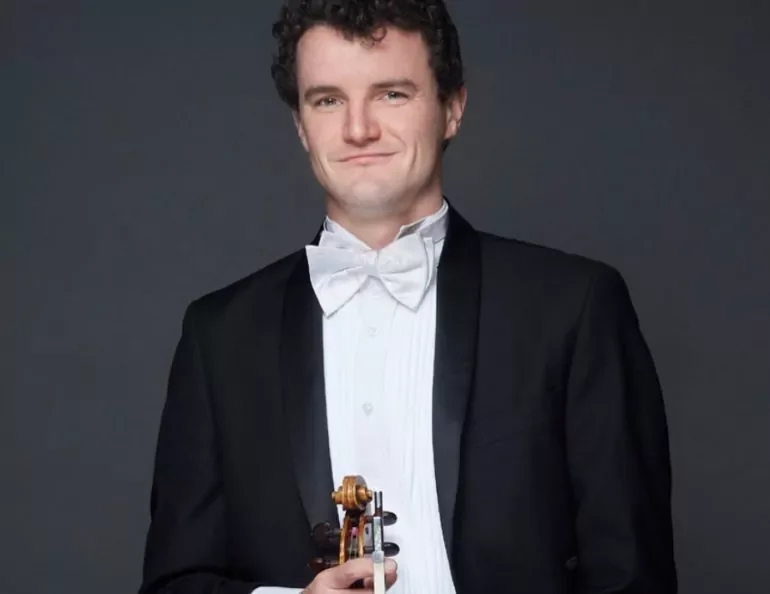Inuit and Mongolian throat singing unite in B.C. for the first time at Sound of Dragon Music Festival
Katajjaq meets Khoomei is a hybrid concert that also features Chinese, Japanese, European, and Arabic music
Caroline Novalinga.
Sound of Dragon Music Festival (June 23 to 26), presented by Sound of Dragon Society in collaboration with Caravan World Rhythms, presents Katajjaq meets Khoomei at the Annex Theatre on June 24 at 8 pm
QUEBEC COMPOSER Katia Makdissi-Warren remembers being 15 years old when she first heard Inuit throat singing while listening to Radio-Canada. Hearing those sounds changed her life.
“I got out my pocket money and bought my first CD,” Makdissi-Warren tells Stir in a Zoom interview. “It was so amazing. I wanted to hear how it works. It is so very unique; we can hear a lot of different sounds inside one person. The more I hear it, the more I’m very touched by the music. It’s something special.”
Makdissi-Warren studied composition with Ennio Morricone, among many others, and has been commissioned by esteemed ensembles across North America, including Vancouver Symphony Orchestra. She is the founder of the Montreal-based world-music ensemble Oktoécho, which specializes in Middle Eastern and Western music as well as Indigenous music of Canada.
Oktoécho is now collaborating with Vancouver’s Juno-nominated Orchid Ensemble, under the direction of Lan Tung, and singer-multi-instrumentalist Anand Avirmed of Mongolia for a ground-breaking performance.
Katajjaq meets Khoomei is a province-wide first. Taking place as part of Sound of Dragon Festival, the hybrid concert combines Inuit, Mongolian, Chinese, Japanese, European, and Arabic music. Never before have katajjaq (Inuit throat singing) and khoomei (Mongolian throat singing) been presented together on-stage in B.C.
Grunts, squawks, howls, coos, crows, squeals, hisses, and more: Both ancestral throat-singing techniques reproduce sounds heard in nature, such as flowing water and blowing winds, and of all sorts of animals. These are also strong elements in traditional Chinese music.
Katia Makdissi-Warren.
Tung will be playing erhu/Chinese violin in the concert. Joining her in the Orchid Ensemble are Dailin Hsieh on the zheng/Chinese zither, and Jonathan Bernard on percussion. Representing Oktoécho are Inuit katajjaq performers Lydia Etok and Caroline Novalinga. (Novalinga often accompanies her daughter, Shina Nova, in TikTok and Instagram videos that have garnered millions of views and followers.) Also performing with Oktoécho are multi-instrumentalist Michel Dubeau (flutes, shakuhachi, duduk, clarinet, and bagpipe); and Moroccan oud player Khalil Moqadem. Avirmed will perform khoomei and play the morin khuur (horsehead fiddle).
Tung, who is also a singer, is mystified by the vast range of sounds that throat singing emits.
“I’m always fascinated by different vocal styles just like I’m fascinated by the way the same instrument in different styles of music can give different colour,” says Tung, joining Makdissi-Warren in the Zoom call. “Like the violin in Indian classical music or western music or Cantonese opera: it’s the same instrument, but it sounds so different. People can use their voice in the same way, and in the vocal tradition of throat singing, they can make more than one pitch with their voice and make different colours and textures. It’s unbelievable to me such a technique: how can a human voice do that? How do people figure this out? It’s fascinating.”
Orchid Ensemble.
Lan is more familiar with Mongolian throat singing than the Inuit style, thanks to her travels to Mongolia, where she has gone to learn to play Mongolian horsehair fiddle. Seeing the parallels between Mongolian and Inuit throat singing makes her look to connections both spiritual and even geographical, the traditions going back as far in time as when a land bridge may have allowed for migration between Asia and North America.
“I think about when the whole world was one big continent breaking apart and people could walk over,” Tung says. “I’m really interested to see the modern connections and how the cultures meet.”
Now in its fifth year, Sound of Dragon Music Festival—which is hosting many other in-person and online events and performances, including Music for the Yangqin (hammered dulcimer) with Taiwanese-French virtuoso Yaping Wang—is also offering a Throat Singing Workshop (June 23). The festival musicians will share the history and cultural context of Inuit and Mongolian throat singing from the festival musicians. Participants will be able to experiment with the style themselves.
Lydia Etok.
Traditionally, Mongolian throat singing is performed by men while Inuit throat singing is only by women; today, those rules are relaxed. Makdissi-Warren loves introducing Inuit throat singing to children in particular. As two performers face each other, each holding the other's arms, making all sorts of sounds, the form is in fact a game, with the singers trying to make each other laugh in a playful game of who breaks first.
“We do a lot of workshops here in different schools, and children want to laugh at the beginning,” Makdissi-Warren says. “We say, ‘it’s okay! You can laugh.’ But by the end they are sitting very still and they just want to hear more. I think throat singing is really near to the heart.”
















